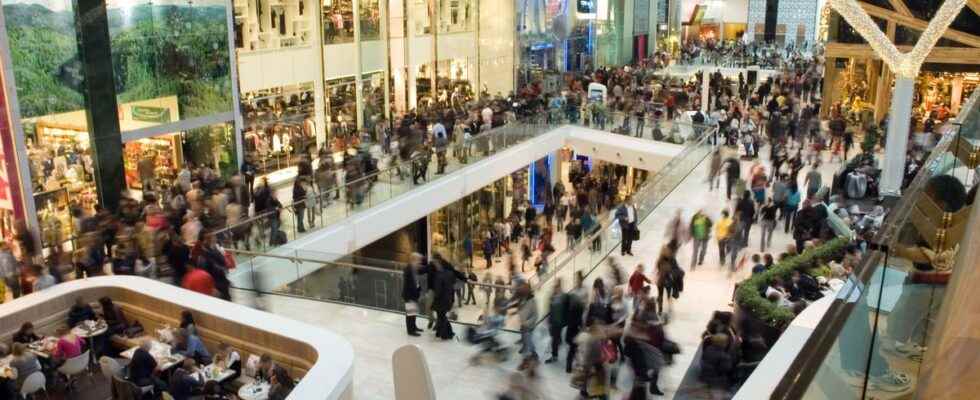Production “decelerates markedly” in accommodation and catering and transport services.
Economic activity bends but does not break: French growth decelerated markedly in the third quarter, with GDP growing by only 0.2% after a jump of 0.5% in the spring, according to data released on Friday by INSEE . In line with the forecasts of the National Institute of Statistics and slightly lower than those of the Banque de France (+0.25%), growth benefited from a slight increase in the production of services (+0.5%) , down however compared to that of spring (+1%).
The last three months of the year should be more difficult, with zero growth expected in the 4th quarter by INSEE, which forecasts a rate of 2.6% for the whole of 2022 (0.1 point below the government estimate). The third trimesteris the last hurray before entering recession», Says Maxime Darmet, economist specializing in France at Allianz Trade, even if «France’s neighbors are doing much worse“.
SEE ALSO – French growth is “fragile” according to the IMF
The French are tightening their belts
Unpleasant surprise in the summer figures, growth in household consumption expenditure on accommodation and food services shrank from 12.7% in the 2nd quarter to just 0.6% over the July period to September. However, these two sectors traditionally benefit from the influx of tourists in the middle of summer and had benefited from exceptional household spending in the spring after two years of the pandemic. “The post-Covid euphoria is over when it comes to spending on servicescommented Maxime Darmet. “In the spring, we (households) had not yet noticed the very sharp rise in energyand consumers had “cash reserves“, he explains to AFP.
Read alsoRising prices: two thirds of French people have already reduced their food purchases
“During the summer, we realized that things were not improving and that gas and electricity pricescontinued to increase, which may have encouraged the French to moderate their consumption. Goods and services combined, household consumption, the usual driver of the French economy, therefore stagnated in the third quarter (0.0% after +0.3%). In detail, energy consumption remains well oriented (+0.6%) unlike food consumption, down 1.6% over the quarter, with food prices continuing to rise in recent months and forcing consumers to tighten their belts.
Due to inflation, which returned this year to levels not seen since the 1980s (consumer prices soared by 5.6% over one year in September), “households feel the drop in their purchasing power hard“says Maxime Darmet. Data for the third quarter are not yet available but INSEE has already recorded a decline in purchasing power in the first half.
SEE ALSO – The ECB announces another sharp rate hike of 0.75 points in the face of record inflation
An increase in the savings rate
The indicator that summarizes the loss of individual purchasing power (“gross disposable income per consumption unit”) thus fell by 1.8% in the first quarter and by 1.2% in the second. What encourages households to save. INSEE thus predicts an increase in the savings rate by the end of the year (17% against 15.5% in the first half). On the corporate side, however, investment remains encouraging and is even progressing compared to the spring.
“This is not surprising as companies are anticipating tougher times in the fourth quarter and therefore taking advantage of favorable financing conditions“Before they harden, deciphers Maxime Darmet. “The contribution of foreign trade is negative this quarter (-0.5 point, after +0.0 point in the two previous quarters)“, adds INSEE, due to weaker expansion of exports (+0.7%) than imports (+2.2%). The decline in exports is particularly marked in services (-0.4% after 3.3% in the spring).
SEE ALSO – Purchasing power: how inflation is upsetting French people’s habits
